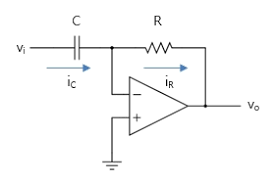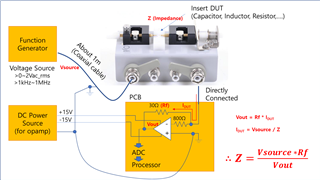
Hello. Experts,
Thank you for reading my thread.
I'd like to ask you something regarding the THS3491 application.
I designed and now I'm testing some pcb like a circuit above.
The purpose of this circuit is,
We 'd like to sensing the current when we applied the AC Voltage(Vi) to DUT(C).
I thought, It would operates like transimpedance amplifier, so we can sense the current without delay.
But, now I realized that It perfectually same with differentiator.
I checked that when the load current is zero,
It operates ideally as expected.
but when the load current goes to higher, the output voltage starts to oscillate.
I think, that's because when the current is higher, the noise is increasing. and the noise affect to input voltage and the noise in the output voltage is more bigger.
So I try to use 5pF Cf on the Rf to cut off the high frequency noise.
But after I add 5pF, The amp don't operate normally even the load is zero. (the output voltage osciallates to much.)
I think, I have to cut off high frequency noise to use this circuit.
So the point is,
I'd like to know I can use Cf to this amplifier.
and if not, could you share the way to apply the low pass filter in this opamp.
and if possible, I'd like to know the alternative parts I can use Cf.
It would be great help for me.
Thank you so much!
# Vin : 0~2Vac_rms / 1kHz~1MHz
# Capacitor capacitance : 1uF~(Impedance of Capacitor (DUT) : 100ohm~2ohm)
# Opamp Voltage : +-15V
# Rf : 30ohm (+ 800ohm inner roop of negative input.
I refered one answer which was posted by Michael Steffes)



